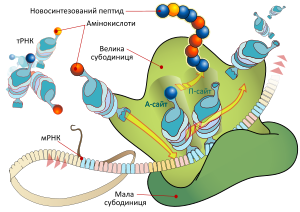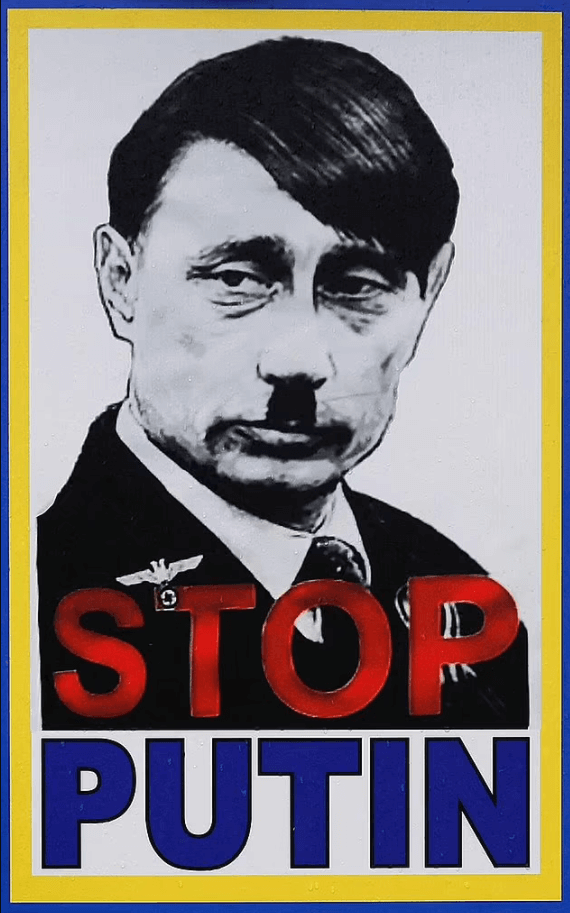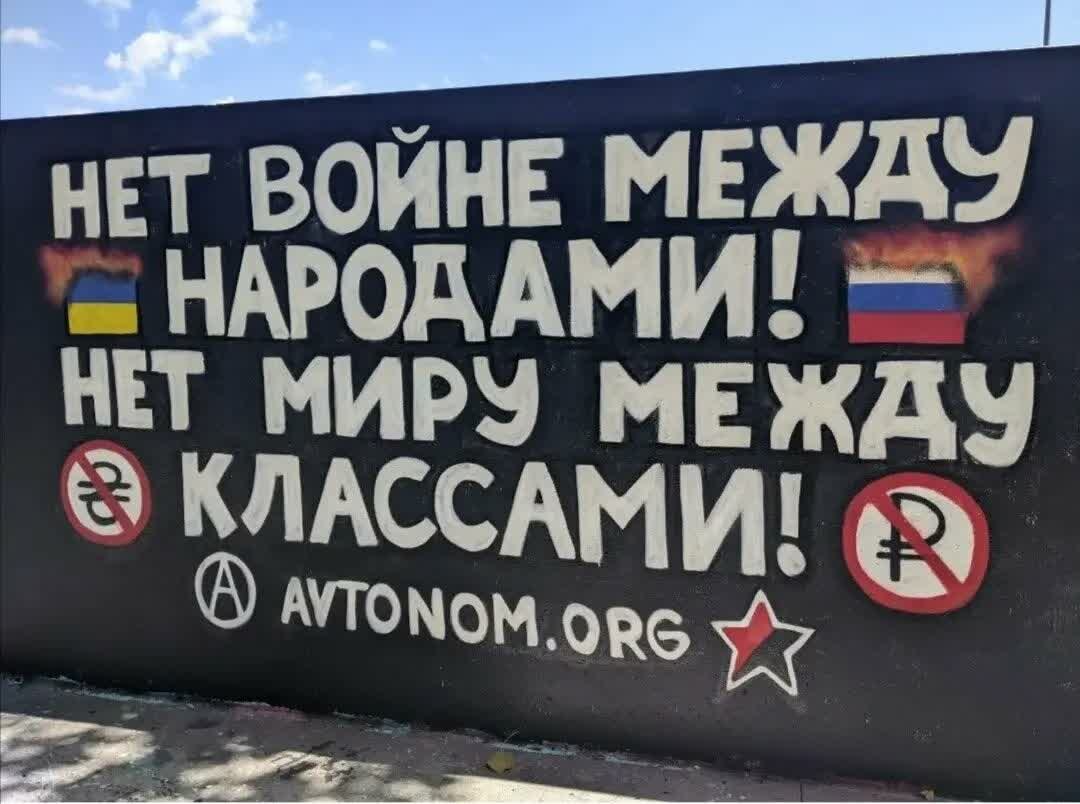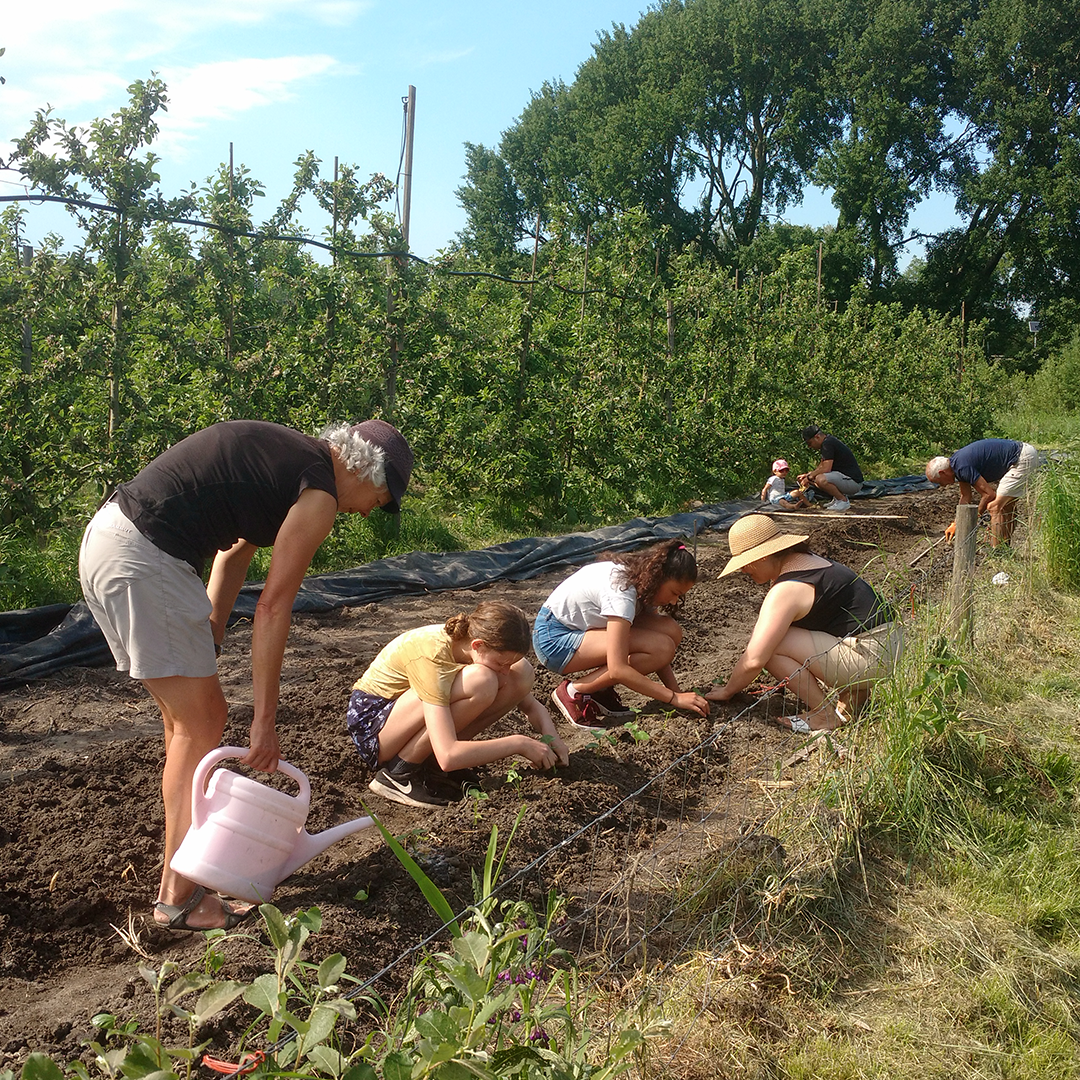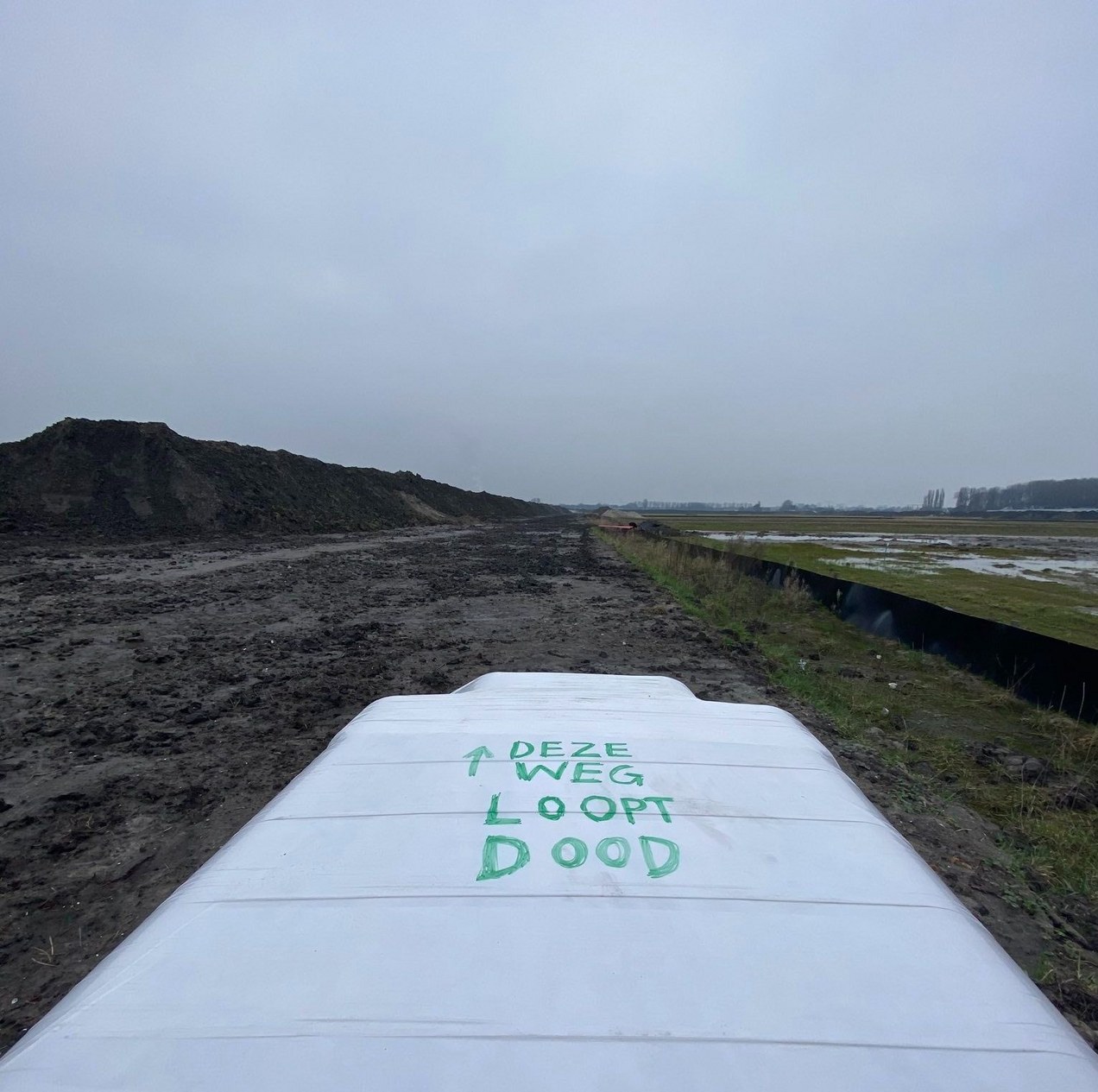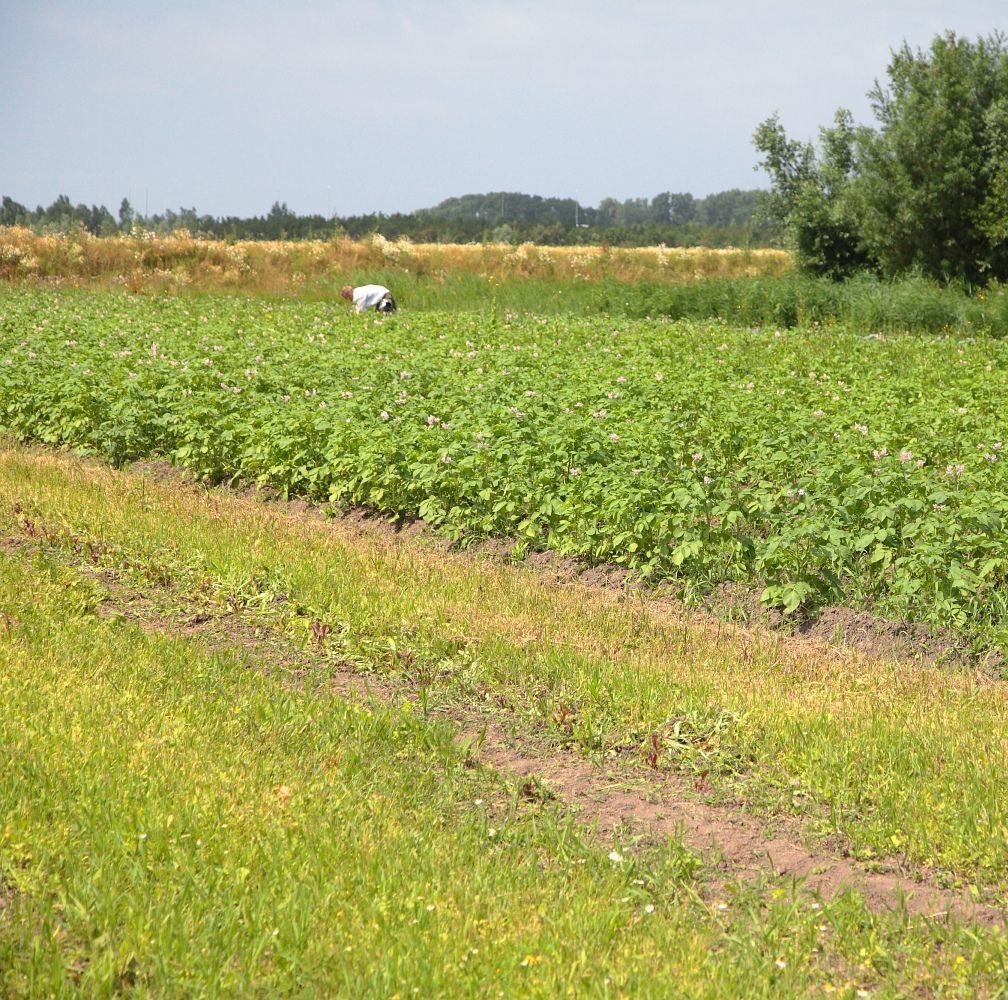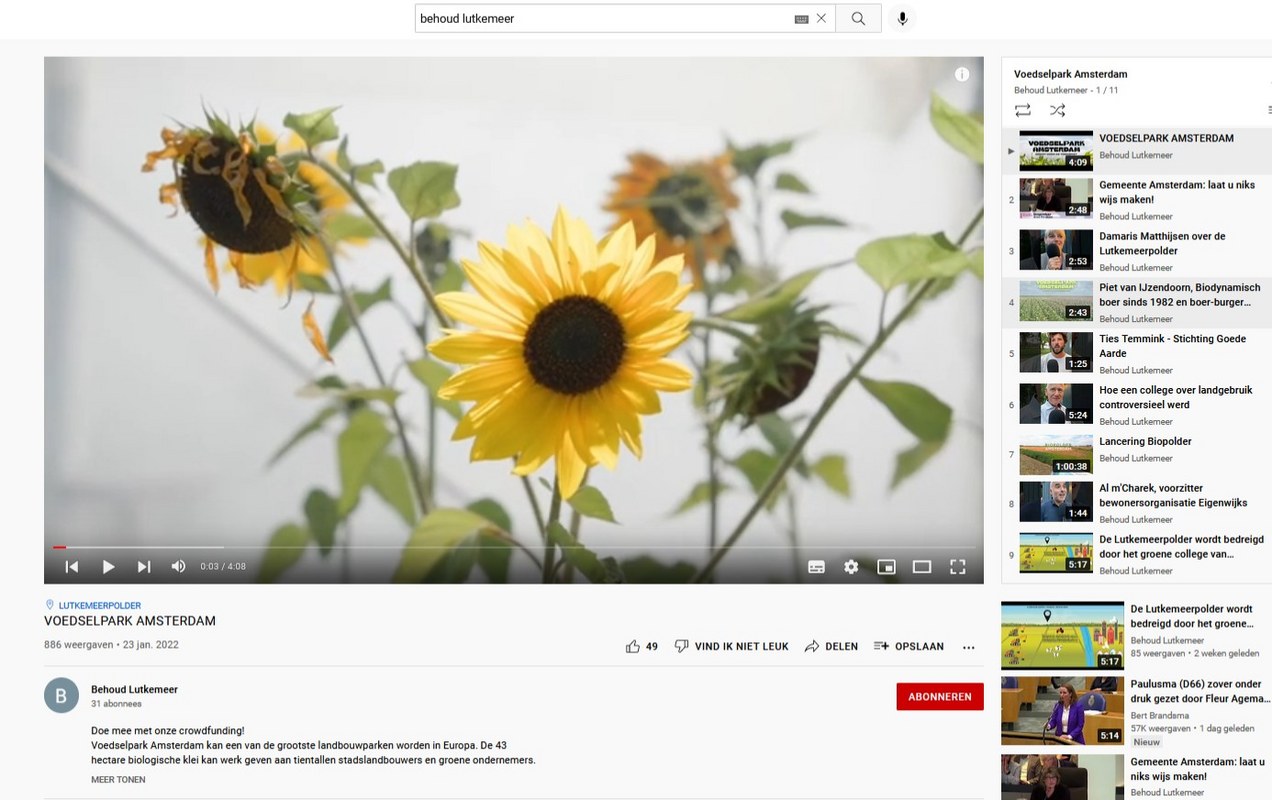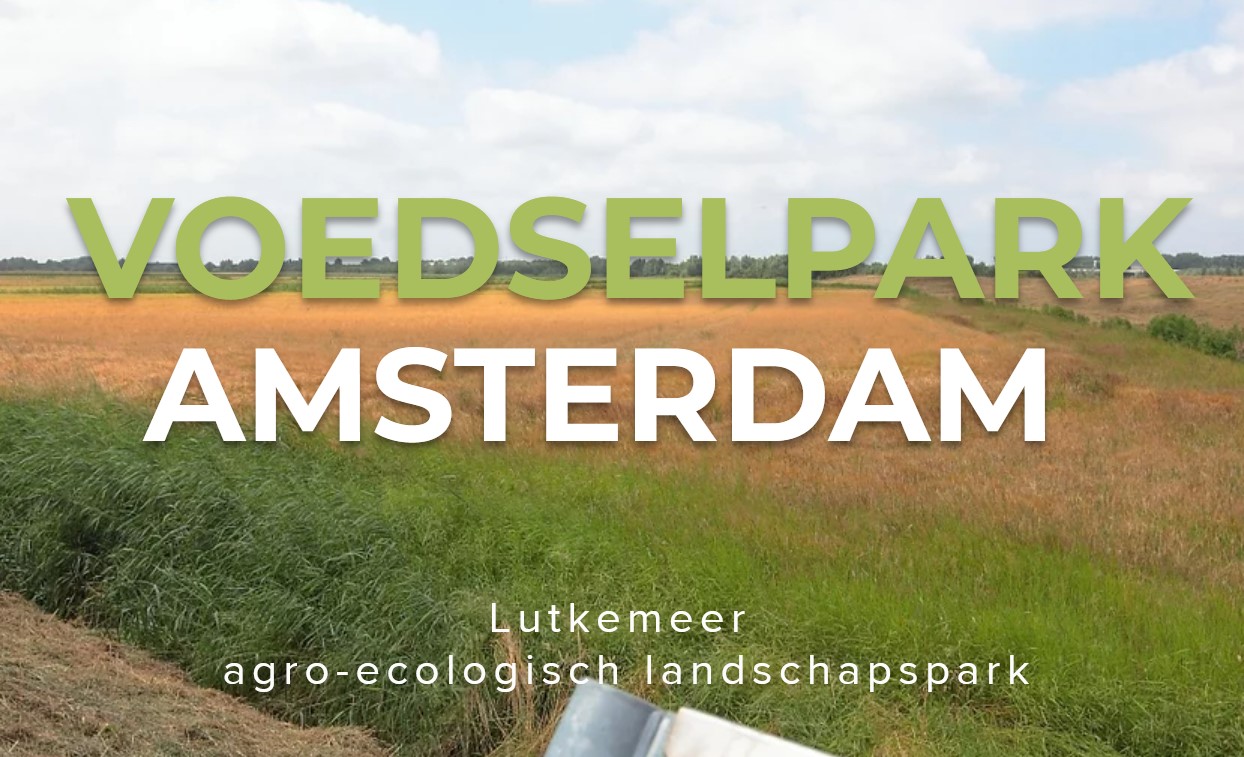SCSS#7, 15 March 2022: “Russia-China Axis: Polar Power-Plays?”
SCSS#7, 15 March 2022:
|

This is a summary of the discussion at the latest workshop of the current series of online Strategic Competition Seminar Series (RSS) webinars held on March 15, 2022 by the George C. Marshall European Center for Security Studies (GCMC) in Garmisch-Partenkirchen, Germany. The summary reflects the overall tenor of the discussion, and no specific element necessarily should be presumed to be the view of either of the participants. Please note that Mark Galeotti is only hosting these useful summaries and can claim no credit for compiling them.
Context:
Russia is an Arctic superpower by virtue of the length of its Arctic frontier (over 50% of the Arctic Ocean is Russian coastline), size and scope of military, civil population and economic presence. With its icebreaker and capability gap and North Pole floating station, it is not just second to none, but more than the others combined. China’s Arctic Strategy (2018) defines itself as having Arctic stakeholder status, in contravention of its 2013 Arctic Council observer commitments. China is a strategic power in the Antarctic.
When we look to both poles, to what extent do we see convergence in terms of goals of Russia and China? Where are points of alignment, convergent interests and divergence? In particular, how might the impact of Russia’s invasion of Ukraine impact on Russia’s military buildup, modernization and securitization agenda in the Arctic, trade along the Northern Sea Route (NSR) which is enabled by conflict free, stable and predictable operating environment and its willingness to uphold the international legal architecture of the Arctic, as agreed by stakeholders? Are the rules of the Sino-Russian relationship now to be written in Chinese characters and not Cyrillic?
Antarctic
The 1959 Antarctic Treaty and related agreements designates the Antarctic as the area south of 60 degrees latitude. The treaty itself has 14 articles and is in force indefinitely. The continent is declared a politically neutral territory, with the sovereignty claims of seven claimant states (Argentina, Australia, Chile, France, New Zealand, Norway and the United Kingdom) set aside. All 12 signatories of the Antarctic Treaty and the 29 consultative parties (those with substantive research programs in the continent who can vote at the annual Antarctic Treaty Consultative Meeting) agreed that the Antarctic can be only be used for scientific and peaceful purposes. Military bases and activities are expressly forbidden and no party can enhance their own or diminish the territorial claims of others. The US and Russia have not made a territorial claim but reserve the right to do so. The Antarctic Treatyallows for a review conference if a majority of signatories agree to open it and consensus of all parties to create a new regulatory framework. Both Russia and China continue to plant the seed that the treaty is not “future proof” and should be discarded and rewritten.
China is a major player on the continent. It has four Antarctic research stations: Great Wall, Zhongshan, Taishan and Kunlun (4,093 meters’ elevation above sea level, second-southernmost research base in Antarctica), with a fifth station being built on the Ross Sea Ice Shelf, to be completed in 2022. Kunlun has never been inspected. China pushes the notion of a “specially managed area” around its research stations over which foreigners should fly over or enter, particularly near Kunlun in an area called Dome A (Dome Argus). Other parties resist this normative change, as well as criticize Chinese non-compliance with rules, for example, pertaining to the submission of environmental and planning documents. China utilizes two icebreakers, the first built (MV Xue Long – ‘Snow Dragon’) was built by Ukraine and has been in service since 1994, the second (MV Xue Long 2) in China.
Russia has been present in the Antarctic longer than China and has ten research bases or stations. Five of these are seasonal bases (Molodezhnaya, Bunger Oasis, Russkaya, Leningradskaya and Druzhnaya-4), and five are operational year-round: Mirniy (founded 1956), Vostok (1957, currently being upgraded to accommodate 35 people during the season and 15 people during the winter period, with a two-year supply of fuel/food), Progress, Novolazarevskaya and Bellingshausen. The Admiral Vladimirsky and Yantaroceanographic research ships, operated by the Russian Navy and help service its bases on the continent. Russia operates six nuclear-powered and 40 diesel icebreakers but these are used in the Arctic.
The Antarctic is mined for its resources. Chinese fishing flotillas currently harvests about 30,000 tons of Antarctic krill annually, the building block of the earth’s food chain. The Soviet Union and then Russia were the main krill harvester, accounting for over 95% of the global volume of krill fishing, but its industry now stagnates and its fishing fleet is in a deteriorated state. The continent is rich in coal deposits and the Southern Ocean rich in gas and the Antarctic ice-cap holds 90% of the earth’s fresh water. At annual meetings of the Commission for the Conservation of Antarctic Marine Living Resources (CCAMLR), which comprises 25 nations and the European Union, both Russia and China in the name of “resource security” cooperate to block proposals to create the world’s largest sanctuary in Antarctica, protecting penguins, reefs, seabirds and ecosystems, as well as initiatives aimed at tackling climate change in Antarctica. However, differences are apparent: while China seeks to exploit the continents resources in 15-20 years, Russia’s goal is to lock them up and avoid alternative supplies of energy entering the market.
Both Russia and China share an interest in projecting Polar Great Power identities in the Antarctic. On the 27 January 1820 the first confirmed sighting of the mainland Antarctic was by a Russian expedition, led by Fabian Gottlieb von Bellingshausen and Mikhail Lazarev. They were commissioned by Tsar Aleksandr I to explore the southern seas in search of the Terra Australis Incognita (“unknown southern land”). In 2020 to be the “Year of Antarctica” and in Russia a stress is placed on Russia’s historical links with Antarctica, with President Putin in 2018 seeking to “restore historical justice” by putting original Russian names of many locations in Antarctica back on the map: “With the most active participation of the Russian Geographical Society, it is proposed to prepare a new Russian Atlas of the World, in which all such cases [of renaming toponyms that bore Russian names] will be correctly interpreted.”
Logistically China tends to be more self-sufficient, though it does rely on Russian facilities in Antarctica, most notably aerodromes, though China seeks to build its own. Russia has two aerodromes, one with India and another temporary one and works with South Africa for resupply. The Chinese company CEIEC (China National Electronics Import and Export Corporation) cooperated with Brazil to build its new Comandante Ferraz Antarctic Station between 2016 and 2020.
The continent is strategically important and both Russia and China have a shared interest in leveraging their presence to compete with Washington. China undertakes dual use “scientific research” which mask military-security ends and erode a rules-based order. From the Antarctic submarines can be launched into three of the world’s oceans – the Atlantic, Pacific and Indian. The EU, US, Russia and China can use Antarctic bases for GPS satellites. China launched its first polar-observing satellite in September 2019 – the ‘Ice Pathfinder’ (Code: BNU-1) – which carriers out “satellite-drone-ground” synchronous scientific experiments in the Antarctic. Russia’s ZALA Aero company (part of the Kalashnikov group within the Rostec state corporation) tests light drones in the extreme conditions of Antarctica, operating the drones at minus 52 degrees Celsius. China has yet to table an Antarctic policy, Russia’s was published in 2001 (before its Arctic) and this was revised in 2021.
Arctic
The Arctic Council’s 2021 Strategic Plan was celebrated for its forward-thinking ambitions. Members envisioned an Arctic in 2030 to be a “region of peace, stability and constructive cooperation”. The permanent member states of the Arctic Council consists of Canada, Finland, Iceland, the Kingdom of Denmark, Norway, Sweden, the United States and Russia, which holds the rotating Chair between June 2021 and May 2023. However, following Russia’s invasion of Ukraine on 24 February 2022, Russia’s “partners” suspended Russia from the Northern Dimension (the European Union, Iceland and Norway) on 8 March and on 9 March the Barents Euro-Arctic Council (BEAC) members (Denmark, Iceland, Norway, Finland and Sweden) and the EU followed suit. Seven of the eight permanent member states of the Arctic Council voted to ‘pausing’ Arctic Council engagement. Russian Foreign Ministry Spokeswoman Maria Zakharova accused its partners, who Russia had designated “hostile states” of being “Blinded by the anti-Russia hysteria”.
This ‘pause’ in effect places addressing any issue inside the Arctic on hold. The Arctic Council no longer represents a robust, operational mechanism for Russia-West dialogue and cooperation. It is hard to envisage the resumption of ties in the near term. The Arctic Council could seek to function without Russia in order to address environmental and other issues that cannot wait for the end of hostilities in Ukraine. Russia’s acceptance of greater risk regarding civil aircraft maintenance standards, spills over into oil and gas production in the Arctic, where sophisticated technology needed for offshore Arctic exploration can easily break down, inviting environmental disasters. For these offshore fields to be profitable global demand needs to price oil at $160 pb over a sustained period.
The economic impact of sanctions, unexpected in scale and scope, is profound. Beijing’s share in the Yamal LNG venture is 29.9%, Russia’s Novatekholds 50.1% and France’s Total holds 20%. Arctic-2 LNG project, China holds 20%, Novatek holds 60%, Total accounts for 10% and the remaining 10% is held by a Japanese consortium. Sanctions mean that external investment should cease. Russia’s ability to limits new Chinese investments in for example Russian ports, will be harder to maintain.
However, Russia may seek to turn the crisis into an opportunity to bring ‘new’ non-Arctic stakeholders partners into the theater: China, India, the United Arab Emirates (UAE), Vietnam, and Bangladesh – the future power houses. The UAE apart, these countries abstained in United Nations General Assembly vote condemning Russia for its invasion of Ukraine. In addition, while Shell may pull out, BP has a 19.7% stake and it remains to be seen if France’s Totalwalks away from Russia’s trans-shipment hubs. What is clear is that Russia’s Arctic stakeholders will all be impacted by the Ukraine invasion. These include corporations such as Rosatom, Novatek, and Rosneft; defense and security heavy-hitters, such as Defense Minister Shoigu, and Security Council Secretary Patrushev; and, the General Staff (in particular its nuclear lobby) and the Defense Industrial Complex (VPK).
Prior to the invasion the Russian media had reported heavily on Russia’s Northern Fleet exercise in the Barents Sea involving 20 warships, submarines and support vessels including the heavy nuclear-powered missile cruiser Pyotr Veliky and the frigate Admiral Flota Sovetskogo Soyuza Gorshkov, as well as around ten aircraft and helicopters from the fleet’s Air Force and Air Defence Army. This exercise foreshadowed NATO’s “Cold Response 2022” exercise, seeking to reassure and deter, the largest in the High North since the Cold War.
Russia’s military agenda in the Arctic is reshaped by the Ukraine invasion. The Russian General Staff now fear NATO escalation in the Arctic. In three weeksof fighting in Ukraine Russia has consumed three years of military hardware production, with money and capabilities designated for the Arctic being expended in Ukraine. Moreover, the Northern Fleet deployed some of its assets, including the Marshal Ustinov cruiser and two amphibious ships to the Eastern Mediterranean in February 2022, so its combat order is rather reduced, while the “Cold Response 2022” is the largest ever. Remarkably, Russia’s state-controlled media in lock-step over the necessity of “demilitarization” and “denazification” of Ukraine, does not make any reference to this NATO exercise, which involves two air-craft carriers, 35 countries and 35,000 troops.
As a result, grey zone or hybrid scenarios involving Svalbard (Spitsbergen) and Bear Island are now much less likely. In the past Russia has accepted risk as a competitive strategic advantage and for example, conducted live-fire missile launches in NATO exercise areas and undertaken GPS jamming. Such spoiler and disruptive conduct is no longer in evidence. Most of Russian’s land forces are fully deployed in Ukraine and an exit strategy short of “declare victory” and leave is not in evidence. The Bering Strait remains the world’s most overlooked emerging global transport choke point. Russia is unable to protect its strategic nuclear submarines on the Kamchatka Peninsula, as it cannot organize a “naval bastion” or uses an A2AD “bubble” in the Sea of Okhotsk. Limited U.S. Freedom of Navigation Operations (FONOPs) to the west of the Bering Strait might reinforce the common benefit that flows from denying Russia the exclusive control over this maritime route. While conventional escalation or provocation scenarios are put on hold, Russia might still look to carry out nuclear testing on Novaya Zemlya, undertaking vertical escalation to demonstrate its nuclear might. Undertaking chemical, biological or radiological attacks in Ukraine itself, risks literal blow-back into Crimea or the Russian cities of Belgorod or Rostov-na-Donu.
Conclusions:
- In the Arctic, Russia and China have a converging interest in the NSR. However, here the situation is very fluid. Climate change creates new borders and brings into question the continental shelf, with overlapping claims from Russia, Denmark (Greenland) and Canada. Might a decision be made that rejects Russian claims? Ukraine demonstrates that Russia is prepared to suffer reputational damage to achieve its ends. Might Russia apply the same logic to the Arctic and seek to nationalize the NSR and thereby control access to transport lines and Arctic resources? Alternatively, might the US Senate ratify UN Convention of the Law of the Sea (UNCLOS), allowing for consensus and adding strength to the Arctic Council and UN stances? Is the Arctic considered a global commons? UNCLOS is not very precise and leaves too much room for interpretation, as evidenced by the behavior of both China and Russia.
- Russia’s invasion of Ukraine stress-tests the China-Russia axis. Does China decide that it cannot let Russia fail too badly, as this sets a poor precedent and strengths NATO/the ‘political West’ and leaves China exposed as a “near peer” competitor? Thus, the invasion of Ukraine deepens the functional axis and widens it: China supplies Russia with military materiel; Russia becomes more dependent on Chinesetechnology, finance and trade; the relationship becomes more asymmetric and in China’s favor. Indeed, the invasion of Ukraine is understood as a global inflection point, one that marks the death of the rules-based order, with Russia, China, India and ASEAN states breaking with the past.
- Or, alternatively, does China decide that Russia now constitutes a serious liability, one that could threaten China’s own strategic autonomy and longer term goals? The challenge to the rules-based order posed by Russia is considered too disruptive: it impacts on China’s own conception of world order; China’s role within it in too detrimental a manner; and constrains Xi Jinping’s ability to address destabilizing inequalities in China itself. China therefore decides to highlight its global leadership role and pressure Russia into a political settlement. In either case, how might we see this contract manifest itself in the Arctic and Antarctic?
- Russia’s inability to unilaterally impose its regulatory scheme on the NSR, requiring permission to enter it, not providing an exception for sovereign immune vessels, and insisting China abides by Russian transit laws (vessels must be piloted by Russian pilots, tolls are charged, and Russia must be pre-warned about trips) would be a clear indicator of change.
- But ultimately, the answer to the question may lie in Moscow and the shelf-life of the Putin regime. For Russia an inability to secure a victory in Ukraine is a defeat. If this is the case, is the parallel 1905 (Russo-Japanese War) or 1917: in other words, does it involve regime/leadership change and reform, or regime and political system change and chaos?
GCMC, March 16, 2022.
Disclaimer: This summary reflects the views of the authors (Pavel Baev, Elizabeth Buchanan and Graeme P. Herd) and are not necessarily the official policy of the United States, Germany, or any other governments.
Der tod ist ein Meister aus Deutschland ….
Mit flammenden Lichtern Im Stahl bricht sich der Schein Asche und Angst tränken das Land Seite an Seite marschieren sie nieder Dicht an dicht Auf Schatten folgt Licht Und nur der Himmel weint Hinauf in die Lüfte Hinfort in unser Grab Die Träume sind zerbrochen Nur Scherben zeugen vom letzten Tanz Sie warten und warten und warten Dicht an dicht Ein bleiches Gesicht Keiner dort, der lacht Es dunkelt fern der Heimat Die Häupter gesenkt Das Stampfen und Schreien Dampf vor den Mündern In der Luft liegt Blei Dicht an dicht Die Seele zerbricht Und nur der Wind leise klagt Ein Schrei wie aus tausend Kehlen Die Erde bebt - ein Vorbote der Nacht Ein blutroter Himmel neigt sich gen Westen Dicht an dicht Der Funken erlischt und es ward Stille Der Richter senkt das Beil Seine Augen so blau Wo sich kein Stern am Himmel zeigt Dort hinter den Zäunen Hausen die verlorenen Seelen Dicht an dicht so schrecklich dicht Bis ihre Namen verblassen Sie winden und würgen In ihren Augen die Angst Die Rettung scheint zu warten Hinter den Schnäbeln der Raben Sie beten und flehen Dicht an dicht Vor dem jüngsten Gericht Doch Gott schweigt Das Trommeln und Schlagen Gestank erfüllt die Luft Der kreischende Tod reitet mit dem Wind Ein Krachen, ein Bersten Dicht an dicht Es schwindet die Sicht Nur Asche bleibt zurück An den Klippen ihrer Hoffnung gestrandet Die Feuer erlischen Dunkelheit senkt sich auf das Land In ihnen ward es für immer Nacht Dicht an dicht Der Morgen kommt nicht Für immer ergraut Hinauf in die Lüfte Hinfort in unser Grab Wir fanden unseren Meister Sein Auge ist Blau Seine Zunge aus Blei Sie trifft dich genau Weit, so weit Es ist an der Zeit Für das Ende
RSS#4, 8 March 2022: “Putin Invades Ukraine: Regional Fallout?”
 This is a summary of the discussion at the latest workshop of the current series of online Russia Seminar Series (RSS) webinars held on March 38, 2022 by the George C. Marshall European Center for Security Studies (GCMC) in Garmisch-Partenkirchen, Germany. The summary reflects the overall tenor of the discussion, and no specific element necessarily should be presumed to be the view of either of the participants. Context: Russia’s invasion of Ukraine has had a devastating impact on humanitarian conditions within Ukraine itself. Critical national infrastructure in Ukraine is under attack. Ukraine’s transport system, hospitals and communication networks are being degraded. The UNHCR reports that over 2 million Ukrainians, mainly women and children, have become refugees in neighboring countries, particularly Poland. At the same time, Russian military advances in Ukraine appear to have stalled in most operational theatres. Explanations for this unexpected outcome include logistical difficulties, poor planning, long and vulnerable supply lines, and an inability to execute combined arms warfare effectively. In places where Russia has taken territory, a hostile civil population protests in the rear, even in Russian-speaking regions such as Kherson. Can captured territory be held? However, the picture is fluid and Russia is not yet fully committed. While Russia will seek to bombard the pivots and hubs used to supply military materiel through Poland and Romania, its usable precision guided weapon stockpile for this “special military operation” is fast depleting, though reserves are available for operations against NATO. Ukraine is able to create reserve battalions around Lviv and receive air defense and anti-tank capabilities. Poland has offered to hand over its entire inventory of 23 MiG-29 fighter aircraft to the US at Rammstein Air Base in Germany for potential transfer to Ukraine pending a NATO decision. These combat aircraft can be flown by Ukrainian pilots. Romania, Slovakia and Hungary also have MiG-29s in their inventories and some or all of these could also be provided to Ukraine. Russia does not have the troop to task ratio to occupy an unwilling Ukraine. And Ukrainian resistance is growing, with the calculation in Kyiv that any deal made today will not be as good as the one made a week from now. This deadlock is dangerous as Putin needs a “special military operation” victory to support his “everything going according to plan” narrative. Thus, if “victory is not possible and defeat is not an option” – if the choice is between bloody debilitating occupation or withdrawal – then Putin may seek to escalate by opening new fronts to present the Russian public with distracting mini-breakthroughs and victories in the wider region. Short-term risks in the Black Sea region appears highest. Longer-term risks include disruptions to energy and food exports from Russia and Ukraine, and conflicts around Exclusive Economic Zones in the Black Sea, for example, as borders are redrawn but not recognized. This summary identifies short and longer term spillover risks in both regions. Black Sea Region Had the “special military operation” actually gone to plan, Kyiv would have fallen within 2-4 days, and in a “best case” scenario from a Russian perspective, resistance would implode and Ukraine suffer sullen occupation. At this point the risks of spillover to Moldova and Georgia would have been much higher. The ideological narrative constructed by Putin around “Slavic unity” and regathering “ancient Russian lands” may have included Transnistria, South Ossetia and Abkhazia. If not, then this would have suggested EU membership was off the cards for both states and imposed neutrality (“demilitarization”) would have been attempted by Russia. However, without first capturing Odesa (still possible through a combined air assault and amphibious landing operation) and finding troops to occupy Ukraine in the context of a hostile and debilitating insurgency, military operations into Moldova do not appear viable. Transnistrian forces themselves have no offensive capability and rail links to Odesa region from Tiraspol are cut. Thus, while in Moldova pro-Russian parties and opposition groups in the breakaway Dniester region and the pro-Russian Gagauzia oppose EU accession, Russia aggression in Ukraine propels the majority of the society to support this westward economic and normative reorientation, as is the case in Georgia. However, the seizure of Georgian territory is possible. Russia’s Black Sea Fleet has been remarkably passive and inactive and still has the reserves and capacity to act. The seizure of Poti region in Georgia is a possibility, supported by Chechen forces formally subordinated to Russia’s Rosgvardia(National Guard) but actually under the control of Ramzan Kadyrov. If Putin’s power weakens, Kadyrov may also plan to act more autonomously into the Pankisi Gorge, even if in the name of Putinism and justified with reference to Russian national goals. In such circumstances, Azerbaijan might look to complete “unfinished business” towards Nagorno-Karabakh. In Georgia itself, the Russian invasion of Ukraine further polarizes society. There is pressure on Georgian Prime Minister Irakli Gharibashvili and ‘Georgia Dream’ party who have adopted a “neutral” policy towards Russia. Neutrality translates into a policy of not supporting international sanctions and keeping Georgia’s air space open to Russian aircraft. Since 24 February opposition rallies in Tbilisi have protested daily against the Russian invasion outside the Georgian Parliament, demanding: 1. A visa regime with Russia; 2. Banning Russian media/propaganda outlets in Georgia; and 3. Closing Georgia’s airspace to Russia. The role of Turkey is pivotal. Turkey attempts to avoid alienating Russia by keeping its air space open to Russian commercial flights and not applying sanctions. As a result, Turkey, like Georgia, is not included on the Russian list of hostile states. However, Turkey does send effective military aid (drones) to Ukraine. Turkey, citing Article 19 of the Montreux Convention, has closed the entrance to the Black Sea to the navies of the parties to the conflict. With its “sea bridge” unable to function, Russia is forced to resupply Syria using a more expensive and more limited air bridge. This in turn weakens Russia’s presence in Syria relative to Turkey’s. At the same time, the US and NATO face a difficult choice regarding the sending of combat ships into the Black Sea in support of Bulgaria and Romania. Turkey attempts to dissuade allies from requesting access, but the need to protect two exposed allies is growing. Baltic Sea Region The risk of spillovers into the Baltic-Nordic region are less than the Black Sea region, at least in the short-term and while the “active phase” of Russian aggression in Ukraine is ongoing. Risks associated with Kaliningrad proves to be the exception to this general rule. If the closure of air space is joined by cutting rail links to Kaliningrad, then this could generate a Russian kinetic response. In addition, reports of resignations and refusal of Belarusian officers and soldiers to follow orders and deploy to Ukraine suggest that Lukashenka’s regime may be less stable than supposed. Does Russia have the spare capacity to bolster Belarus, when Rosgvardia is needed at home as a praetorian safeguard to quell protest potential in Moscow, St. Petersburg and other cities in Russia? The Estonian Center Party has severed ties to the United Russia Party. On 5 March, 103 members of its extended board, with no abstentions, voted to rescind the cooperation protocol signed in 2004. In Latvia, though, the polarization of society is a danger, with pro-Russian supporters using provocative rhetoric to radicalise their potential voters ahead of parliamentary elections. Two potential conflict dates loom – the commemoration of Latvian Legionnaires on 16 March and the Soviet Victory Day on 9 May. Lithuanian Minister of Foreign Affairs Gabrielius Landsbergis has stated that Vilnius has no red lines regarding possible sanctions against Russia – including oil and gas. Non-aligned Finland and Sweden seek even closer defense cooperation with each other and with NATO. Indeed, the potential for NATO membership has increased and this will lead to heightened tension in medium to long-term. Defense spending is set to increase in all Baltic States. Lithuania adds an extra $0.5bn and its parliament agrees to increase defense spending to 2.5% of GDP. Spending will likely be on deterrent gaps in capabilities necessary to counter Russia’s way of war, such as air defense and drones. Points of escalation might be driven by the possible use of thermobaric bombs in Kyiv, and/or the slaughter of Ukrainian refugee convoys struggling to reach the Polish border from Lviv. Such horrific violence would stress-test to destruction the ability of NATO member states to achieve all three of its objectives: 1) apply sanctions to Russia and provide humanitarian and military aid to Ukraine; 2) uphold national interests, democratic values and principles; and 3) avoid miscalculation, spillover and escalation. As RHSS#3 summary noted: “In the context of mass civilian casualties, how does the West calibrate and balance moral principles that reflect its values with pragmatic approaches in line with interests? At what point does “responsibility to protect” trump other considerations?” Almost certainly risk calculus in NATO would change, with a much greater emphasis on alleviating immediate suffering and the “responsibility to protect”. Conclusions:
GCMC, March 8, 2022. Disclaimer: This summary reflects the views of the authors (Pavel Baev, Dmitry Gorenburg and Graeme P. Herd) and are not necessarily the official policy of the United States, Germany, or any other governments. |
Brand ruigoord verwoestte de kabouter radiostudio …
Why sanctions against Russia exempt gas and oil
Some Ukrainians are not happy. “We need real sanctions, not just some problems for Putin’s friends,” Ukrainian lawmaker Oleksiy Goncharenco said in a video posted to Twitter Thursday. “We need an embargo on Russian gas and oil because every barrel of Russian oil and every cubic meter of Russian gas is now full of the blood of Ukrainians.“
RHSS#2, February 24, 2022: “Russia Invades Ukraine: Putin’s Mindset and End Game”

This is a summary of the discussion at the latest workshop of the current series of online Russia Hybrid Seminar Series (RHSS) webinars held on February 24, 2022 by the George C. Marshall European Center for Security Studies (GCMC) in Garmisch-Partenkirchen, Germany. The summary reflects the overall tenor of the discussion, and no specific element necessarily should be presumed to be the view of either of the participants.
Context:
On February 24 2022 at 0300 GMT President Putin in a nationwide address announced a “special military operation” against Ukraine. He argued that the West – an “Empire of lies” – sought to destroy Russia’s “traditional values”. Red lines had been crossed: “in the last few days the NATO leadership has been speaking about the need to accelerate the advance of the alliance’s infrastructure towards Russia’s borders”. An aggressive “anti-Russia” was being created at Russia’s borders: “For us it is a matter of life and death, the matter of our historic future as a nation [Rus: narod]. This is the very red line I have spoken about many times. And they have crossed it.” Putin stated the goals of this “special military operation”: “we will strive for the demilitarisation and denazification of Ukraine … Our plans do not include the occupation of Ukrainian territories. We are not going to impose anything on anyone by force …”. In the same breath he then warned against “interference”: “Whoever tries to interfere with us, let alone create threats for our country, for our people, should know that Russia’s response will be immediate and will lead you to such consequences that you have never experienced in your history.”
Russia’s Goals:
Almost immediately Russia began to invade Ukraine, from Belarus, the Black Sea, Crimea, and Russian-controlled Donbas. President Putin’s recognition of the so-called Donetsk People’s Republic (DNR) and Luhansk People’s Republic (LNR) following the emergency session of the Russian Security Council on 21 February 2022, was to engage directly with the Ukraine military. The subsequent and further multi-axis invasion of Ukraine had, according to Putin, two main goals – ‘demilitarization’ and ‘denazification’:
- ‘Demilitarization’: this translates into the military defeat of the Ukrainian armed forces and militia’s in the field. To that end Russia attacked Ukrainian military infrastructure, command and control, and launched information operations and cyber-attacks seeking to degrade the Ukraine’s ability and will to fight. Going hard and fast and everywhere from the outset was designed to cause military collapse, allowing large cities to be surrounded and then surrenders/liberation to be negotiated.
- ‘Denazification’: this entail forced regime change through killing or capturing and imprisoning the current government under the charge that they are neo-Nazis leading a fascist junta that has undertaken genocide against Russian speakers. The question of how deep the ‘denazification’ process is supposed to run is unclear: does it include civil society activists, anti-corruption bodies, civil disobedience and become the label used to justify mass repressions?
- Putin’s 5-step theory of victory: we can infer a series of logical steps in line with Putin’s stated aim of denying Ukraine statehood: 1) the process of demilitarization leaves the state unprotected; 2) regime decapitation under the guise of ‘denazification’ creates a leadership vacuum and breaks the will of society to resist; 3) Russia fills the leadership vacuum with pro-Russian stooges then are recognized by Moscow, the Ukrainian constitution is changed, and state stabilized; 4) the new leadership sign a “Minsk 3” agreement recognizing Crimea as part of Russia and the two Donbass territories as independent states and conclude as security pact with Russia; 5) Over the longer term full-scale costly and reputation-sapping military occupation is not necessary to exert sufficient control over a ‘Russian Ukraine’. Russia exercises power at much lower cost through elite proxies, soft power tools (media control) and the cooption of some regional elites and representatives. As we noted in RHSS#1 summary: “Putin seeks to extinguish Ukraine as a politically pluralist democratic polity with a vibrant civil society on Russia’s doorstep, removing a legitimation challenge to a dictatorial and quasi-monarchial Russia.” In the process Russia destroys the notion of Ukraine as an independent entity, the very idea of Ukrainian statehood.
- Putin’s 1956/1968 Instrumental Beliefs: There are two Soviet intervention models that provide loose comparisons and analogies for understanding Putin’s strategic behavior. First, in late 2020 Putin threatened the Belarusian opposition that Russia would intervene with a “law enforcement reserve force”. This was akin to Soviet military mobilization on the border with Poland in 1981. Second, Russia’s invasion of Ukraine in 2022 compares to Soviet interventions into Hungary in 1956 and Czechoslovakia in 1968, with Prague and Budapest substituting then for Kyiv today. Invasion or ‘intervention’ was then and is now justified by the restoration of ‘order’.
- Putin’s 1941-45 Philosophical Beliefs: While Russia conducts a “war of aggression against a sovereign state”, in the words of Germany’s foreign minister, and a democratic Ukraine fights for survival against a dictatorial Russia, Putin is caught in his own time warp. He appears to be fighting the Great Patriotic War in miniature. In his ‘special military operation’ speech of 0300 GMT 24 February, Putin notes that in 1941 the USSR made a mistake in “pleasing a potential aggressor. We won’t make such a mistake for the second time, we do not have the right to.” Putin understands Russia to be refighting “neo-Nazis”, a “fascist junta” in Kyiv, one that practices genocide, and is in need of denazification. Putin wages war in the present to purge the past and rid Russia of grievances, resentments, and humiliations. Thus while post-war Soviet intervention practice may provide models that shape ‘Putin’s the tactician’s’ instrumental beliefs, the Great Patriotic War very much shapes ‘Putin the ideologue’s’ picture of the world, the philosophical beliefs in his operational code.
Putin’s Risk Calculus and Reality Check/Miscalculation?
- Putin’s Inner Circle and Decision–Making: There is evidence to suggest that as of late spring 2021 a decision had been made to invade, with planning far advanced by October 2021, but this was not preordained and precise timing and choreography had yet to be settled. The televised Russian Security Council meeting of 22 February was an attempt to broaden the circle of responsibility by publicly associating all Security Council members with the decision to recognize the rebel DNR and LNR as independent states. In reality, the Security Council is not a decision-making forum. It may offer assessments and advice. Putin’s inner decision-making circle shrinks to three or four individuals: Alexander Bortnikov (Head of FSB), Sergei Patrushev (Secretary of Security Council), Sergei Naryshkin (Head of SVR) and Sergei Shoigu (Defense Minister). The first three, at least, appear more hard-line than Putin himself regarding opposition to the West and a desire to reassert Russian great power status, prestige and honor. They have most to lose from Putin stepping down in 2024 and are most invested in ‘victory’ over Ukraine. Putin clearly conflates “Russia’s destiny” with his continued rule.
- Russian Public Support/Opinion: There was no real attempt to mobilize public support in Russia prior to the invasion. This suggests that either passive or apathetic support is sufficient. It may reflect Putin’s thinking public support for something is not important, it only becomes so when it is against him. The justification for invasion – that the Ukrainian leadership are Nazi’s – is one that superficially will have broadest appeal in Russia, but on closer appeal creates cognitive dissonance: President Volodymyr Zelensky is Jewish as well as Russian-speaking and where is the evidence of genocide committed against the Russian speakers in Ukraine? Public protests in Russia are sporadic and small-scale but nevertheless are occurring. Russian state controlled media fully support the “special operation to protect the Donetsk and Luhansk people’s republics”, but near-silence on actions along other vectors of attack from Belarus or operations near Kharkiv will be hard to sustain. How is carnage in Kyiv to be explained?
- Insurgency”: The ability of the less well-equipped Ukrainian military to retard Russian advances under Russian air superiority points to morale and motivation differences as an important factor in warfare. The longer the conventional military conflict, the more radicalized the Ukrainian population and more determined to undertake passive resistance, civil disobedience and insurgency, the less legitimate pro-Russian elements in Ukraine will be. If Russia should try and adopt ‘Syria tactics’ in quelling resistance in the cities of a brother nation – attack schools, hospitals and bakeries to create refugees – it will suffer a massive reputational loss. The first casualties will be Ukrainian civilians, the second Russian narratives associated with ‘liberation from a junta’ and ‘Slavic brotherhood’. Liberators do not fight their way into “the mother of all Russian cities”.
- Western unity: Sanctions are designed to impose costs, to deter further escalation in the short-term and curtail Russia’s ability to do more harm in the longer-term, as well as to demonstrate unity, and provide Ukraine with time. Current sanctions appear designed to impose systemic costs to the Russian economy and curtail the consumption habits and mobility of Russia’s elite. The triggering of SWIFT cut-off and personal sanctions on Putin are held back for now as an escalatory reserve and conditional on how Kyiv is taken.
- Belarus: President Alyaksandr Lukashenka loses in most scenarios bar one: prolonged Ukrainian resistance and need for mediation. In other respects he is even more dependent on Putin. Arguments advanced by Putin regarding Ukraine’s lack of statehood and “ancient Russian lands” can also be made to work against an independent Belarus. The limits of Lukashenka’s autonomy is likely to be the extent to which he can keep the Belarusian military on Belarus soil. Lukashenka has stated: “our troops do not take any part in this operation.”
Lutkemeer
|
|
|
|
|
|
|
|
|
First post India published this article on the ongoing European problem
The meta-narrative about India’s non-involvement in the Ukraine imbroglio
As Brahma Chellaney keeps saying, Western Europeans and Americans are fighting the wrong enemy. This creeping NATO-isation is a distraction when they should be worrying about China

A woman wears Ukrainian national colours at a demonstration along the street near the Russian embassy to protest against the escalation of the tension between Russia and Ukraine in Berlin, Germany. AP
the white rider
(Het leuke van … is weten op reis te zijn
Lutkemeer: bijna kwart miljoen binnen!
|
|
|---|
|
|
|
|
|
| HET PLAN VOEDSELPARK |
| Lokaal voedsel telen op duurzame wijze en behoud van landschap en biodiversiteit zijn de uitgangspunten. Lees hier over Voedselpark Amsterdam |

